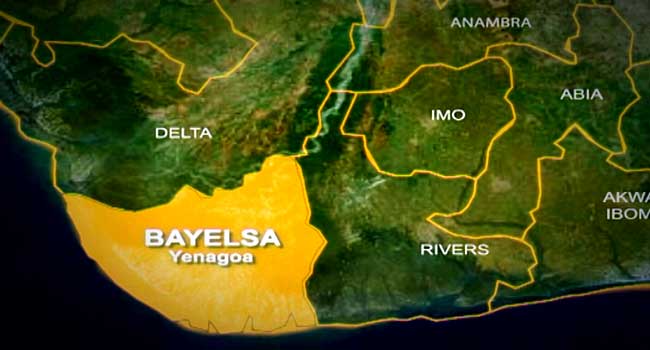By 2025, the population of Bayelsa State is expected to grow to approximately 2.75 million, marking a 9.5% increase from the 2022 estimate of 2.53 million. This growth is driven by factors such as natural population increase and migration patterns within Nigeria. Despite being one of the least populated states in the country, Bayelsa is experiencing steady population growth due to ongoing improvements in infrastructure, healthcare, and living conditions. These developments are making the state more attractive for both residents and newcomers.
Table of Contents:
The state’s population growth is also supported by economic opportunities and enhanced social services. As Bayelsa continues to develop, it is likely to see a consistent rise in its population, reflecting broader trends of urbanization and regional development in Nigeria. This growth is a positive indicator of the state’s potential for future progress and stability.
How Has Bayelsa State’s Population Evolved Over Time?
Since its creation in 1996, Bayelsa State has undergone significant population changes. During the 1991 census, the population of the area now known as Bayelsa was recorded at 1,121,693. By the time of the 2006 census, this number had risen to 1,703,358, reflecting the state’s early development phase as people began to settle in the newly established region. Improved infrastructure and services during this period contributed to this growth.
In 2016, the population reached an estimated 2,277,961, and by 2022, it had grown further to approximately 2,530,000. This represents an 11% increase from 2016, driven by factors such as natural population growth, migration, and economic development. By 2025, the population is projected to reach 2.75 million, with a growth rate of 9.5% from 2022. This upward trend highlights the state’s improving living conditions, healthcare services, and economic opportunities, which continue to attract residents and support population growth.
Bayelsa State Population Distribution by Local Government Area
Bayelsa State’s population is distributed across its Local Government Areas (LGAs), each contributing to the state’s overall demographic landscape. Below is a breakdown of the projected population for each LGA in 2025:
| No | Local Government Area | Population Projection (2025) |
|---|---|---|
| 1 | Brass | 275,000 |
| 2 | Ekeremor | 410,000 |
| 3 | Kolokuma/Opokuma | 115,000 |
| 4 | Nembe | 190,000 |
| 5 | Ogbia | 270,000 |
| 6 | Sagbama | 280,000 |
| 7 | Southern Ijaw | 475,000 |
| 8 | Yenagoa | 525,000 |
Yenagoa, the state capital, is projected to have the highest population at 525,000, reflecting its status as the economic and administrative hub of Bayelsa. Southern Ijaw follows with 475,000, while smaller LGAs like Kolokuma/Opokuma have lower populations. This distribution highlights the varying levels of development and urbanization across the state.
The Demographics of Bayelsa State in 2025
Age Distribution
The age distribution in Bayelsa State reflects a youthful population, with a significant portion under the age of 25. Below is a detailed breakdown of the projected age groups for 2025:
| Age Group | Population | Percentage |
|---|---|---|
| 0–14 | 1,045,000 | 38.0% |
| 15–24 | 500,000 | 18.2% |
| 25–54 | 1,000,000 | 36.4% |
| 55+ | 205,000 | 7.4% |
Children aged 0–14 make up 38% of the population, indicating a high birth rate and a young demographic. The working-age group (25–54) accounts for 36.4%, while those aged 55 and above represent only 7.4%. This age structure suggests a need for investments in education, healthcare, and job creation to support the growing youth population.
Gender Distribution
Bayelsa State has a relatively balanced gender distribution, with females slightly outnumbering males. The projected gender breakdown for 2025 is as follows:
| Gender | Population | Percentage |
|---|---|---|
| Male | 1,365,000 | 49.5% |
| Female | 1,385,000 | 50.5% |
This near-equal gender distribution is indicative of a balanced population structure, which is essential for social and economic stability. It also highlights the importance of policies that promote gender equality and opportunities for all residents.
Ethnic Composition
Bayelsa State is predominantly inhabited by the Ijaw ethnic group, but it also includes other ethnicities. The projected ethnic composition for 2025 is outlined below:
| Ethnicity | Population | Percentage |
|---|---|---|
| Ijaw | 1,800,000 | 65.5% |
| Urhobo | 300,000 | 10.9% |
| Yoruba | 250,000 | 9.1% |
| Igbo | 200,000 | 7.3% |
| Other | 200,000 | 7.3% |
The Ijaw people constitute 65.5% of the population, reflecting their historical and cultural dominance in the region. Other ethnic groups, such as the Urhobo, Yoruba, and Igbo, contribute to the state’s diversity. This multicultural environment fosters a rich cultural heritage and promotes unity among the various communities in Bayelsa.

